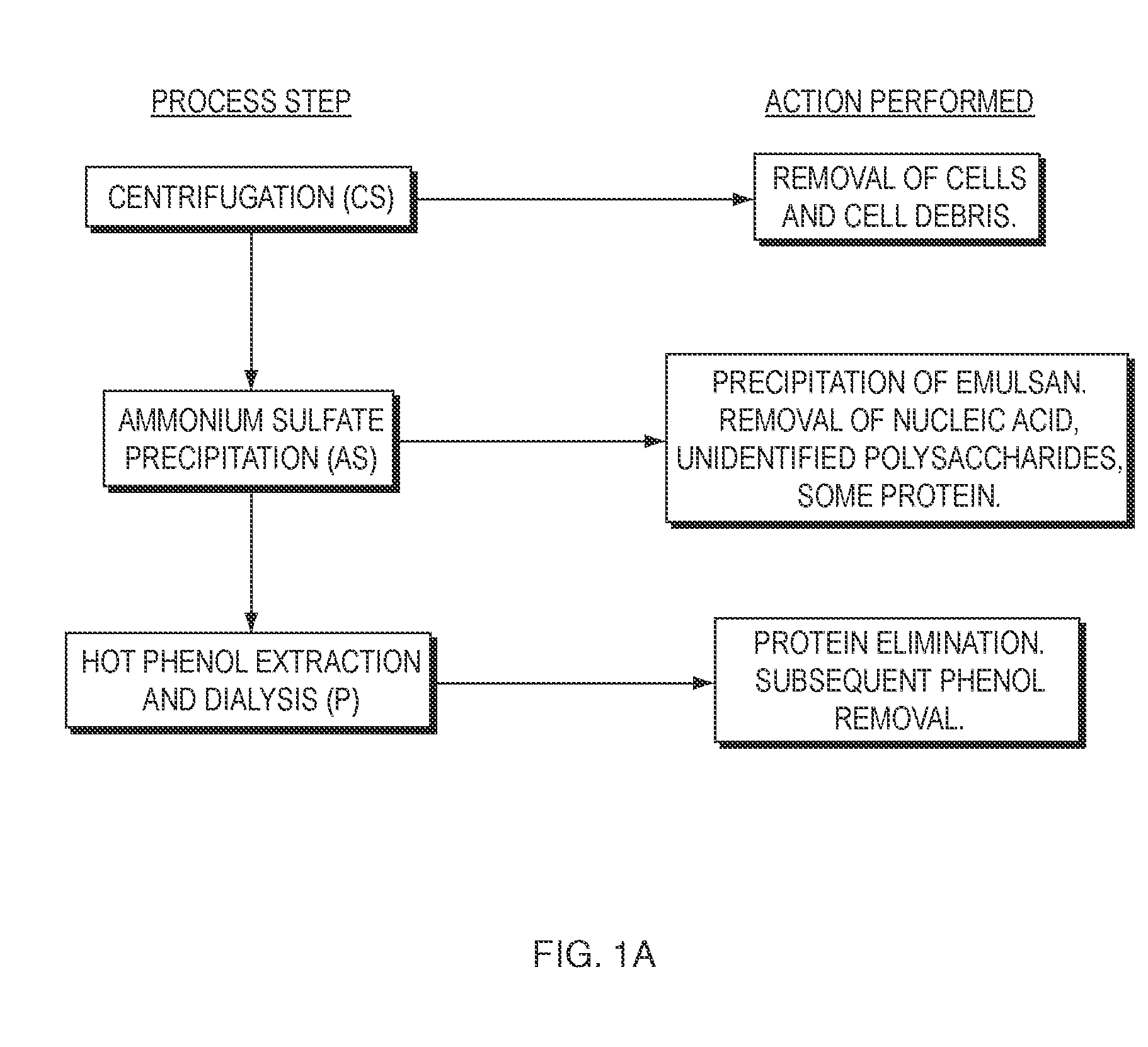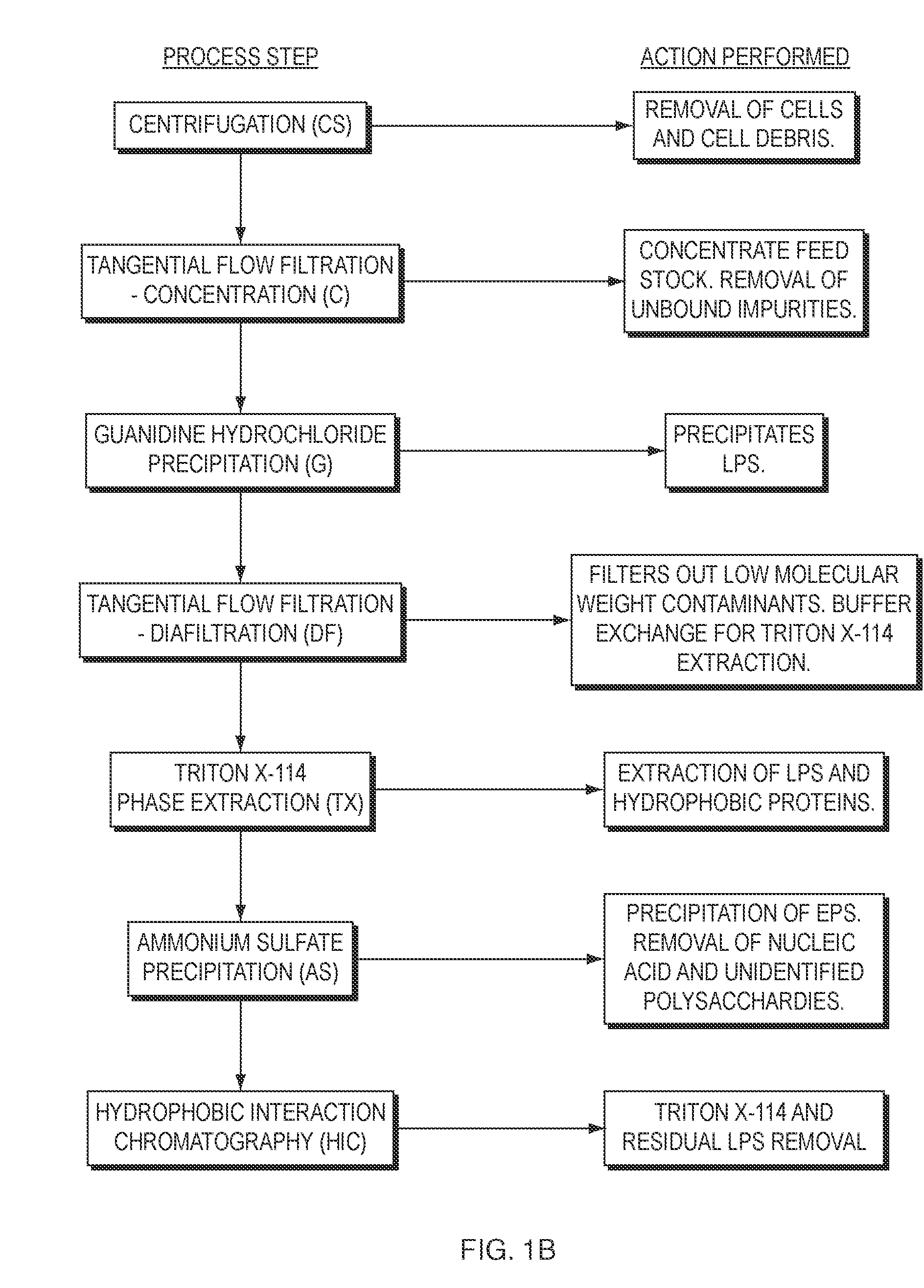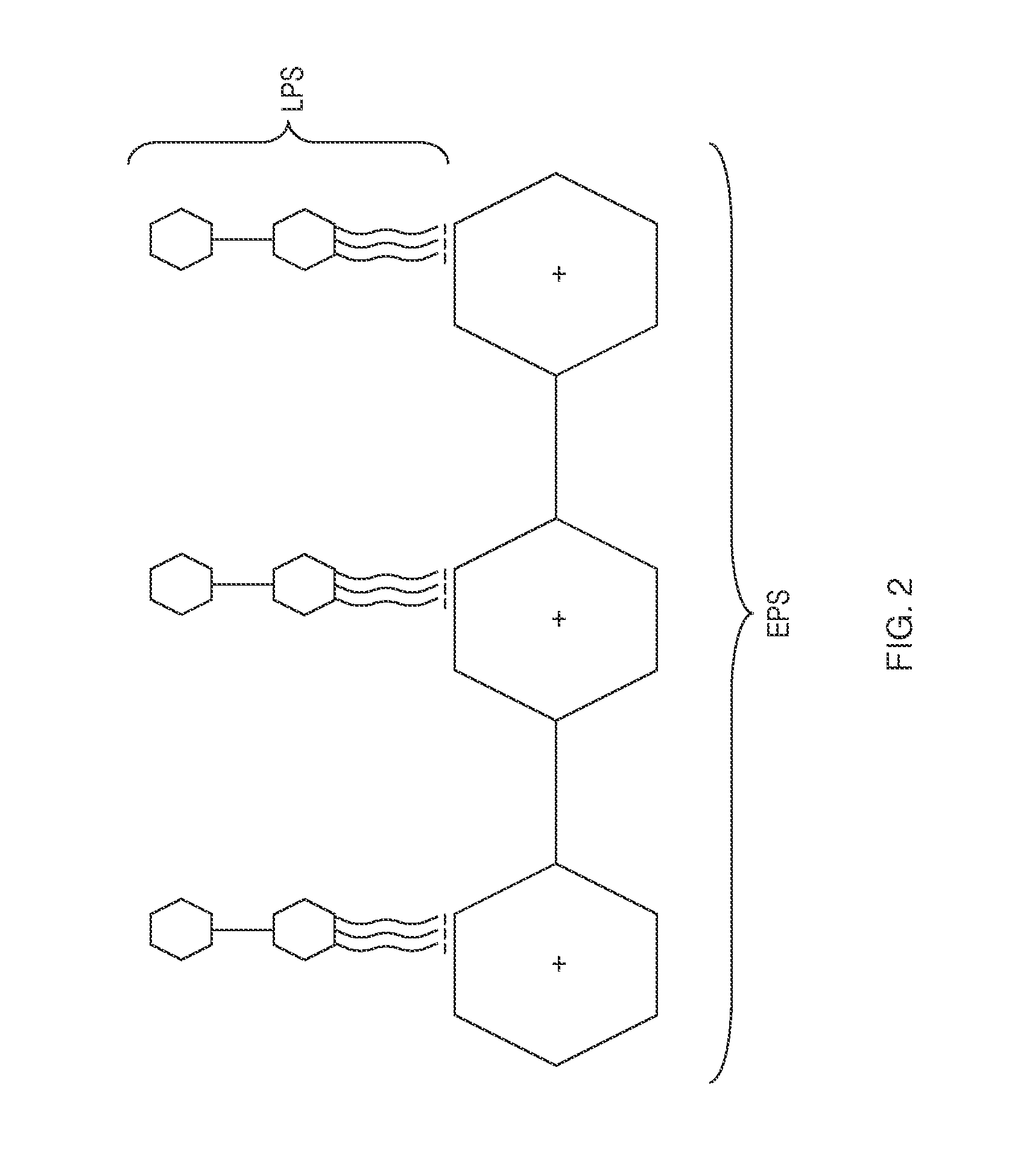Polysaccharide composition and methods of isolation of the emulsion stabilizing cationic polyelectrolytic polysaccharide
- Summary
- Abstract
- Description
- Claims
- Application Information
AI Technical Summary
Benefits of technology
Problems solved by technology
Method used
Image
Examples
example 1
Materials and Methods
Strain and Culture Conditions
[0123]Acinetobacter venetianus RAG-1 (ATCC 31012) was obtained from the American Type Culture Collection. Unless otherwise noted all chemicals and media components were purchased from Fisher Scientific or Acros Organics.
[0124]The strain was grown in a defined medium which consisted of (per liter of water): K2HPO4, 17 g; KH2PO4, 7.26 g; MgSO47H2O, 0.5 g; (NH4)2 SO4, 4 g; and 3 ml of a trace metal solution which contained (per 100 ml): CaCl2, 36.8 mg; FeSO4.H2O, 60.4 mg, ZnSO4.7H2O, 42.2 mg, Na2MoO4, 69.6 mg; CuSO4.5H2O, 62.4 mg; MnSO4.4H2O, 59.4 mg; CoCl2.6H2O, 78.8 mg. The MgSO4.7H2O stock solution was sterilized separately and then added to the culture medium.
[0125]Cultures grown for development of a purification process were according to the previous literature using 1% (w / v) ethanol as the carbon source (13). Each culture was produced in five 4 L baffled flasks each containing 1 L of media and incubated at 30° C. for 72 hours with...
example 2
Emulsan Complex Identification
[0150]Since its discovery in 1979, emulsan has been described as a complex polyanionic lipopolysaccharide, which could be produced as a crude emulsan or a protein-free apoemulsan (Zuckerberg, A.; Diver, A.; Peeri, Z. Applied and Environmental Microbiology 1979, 3, 414-420). Emulsan was the product resulting from ammonium sulfate precipitation, whereas apoemulsan was the outcome of the hot phenol extraction. Emulsan has consistently been shown to have high levels of protein impurities, on the order of 12-17% by weight. However, apoemulsan was previously considered to be pure, with impurities less than 1% (w / w %) (Zuckerberg, A.; Diver, A.; Peeri, Z. Applied and Environmental Microbiology 1979, 3, 414-420).
[0151]Contrary to that previous work, recent studies in our laboratory have indicated that apoemulsan (from now on known as emulsan) is not a single homogenous polysaccharide, but likely a complex of two or more components, with LPS as a major contamina...
example 3
Exopolysaccharide Purification
[0154]The impetus for the discovery of the complex nature of emulsan was the development of a new purification process for emulsan, with the primary focus to eliminate the hot phenol extraction for the purification scheme. Work had commenced on the purification process concurrently with the complex identification studies. However, once the discovery of the LPS impurity was realized the development of a purification process to isolate the high molecular weight component became the highest priority.
[0155]In order to purify the high molecular weight component (EPS), the degree of hydrophobicity, size, and charge were exploited in order to realize this goal. During process development, the major impurities that were identified and monitored throughout the purification process included DNA, HCP, and LPS. Other capsular or exo-polysaccharides as well as the target EPS could not be adequately quantified but rather were observed qualitatively through SDS-PAGE w...
PUM
| Property | Measurement | Unit |
|---|---|---|
| Fraction | aaaaa | aaaaa |
| Mass | aaaaa | aaaaa |
| Mass | aaaaa | aaaaa |
Abstract
Description
Claims
Application Information
 Login to View More
Login to View More - R&D
- Intellectual Property
- Life Sciences
- Materials
- Tech Scout
- Unparalleled Data Quality
- Higher Quality Content
- 60% Fewer Hallucinations
Browse by: Latest US Patents, China's latest patents, Technical Efficacy Thesaurus, Application Domain, Technology Topic, Popular Technical Reports.
© 2025 PatSnap. All rights reserved.Legal|Privacy policy|Modern Slavery Act Transparency Statement|Sitemap|About US| Contact US: help@patsnap.com



